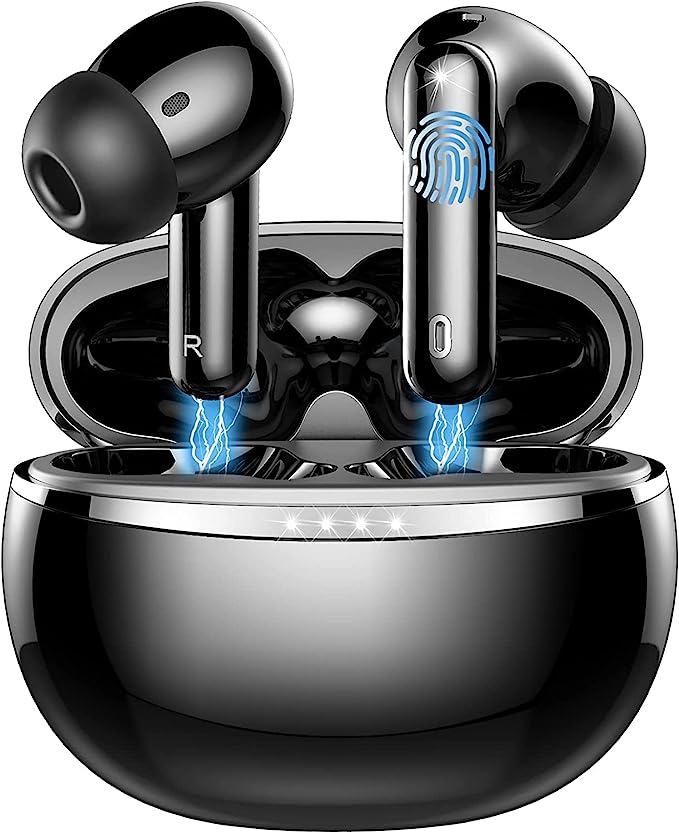The Algorithm of Silence: Deconstructing Hybrid ANC and Composite Acoustics in the Redmi Buds 3 Pro
Update on Nov. 22, 2025, 5:38 p.m.
In the trajectory of consumer audio, certain devices mark the inflection point where premium technology cascades into the mass market. The Xiaomi Redmi Buds 3 Pro represents such a moment for Active Noise Cancellation (ANC). Historically, effective noise suppression was the exclusive domain of high-end flagship models, reliant on expensive silicon and complex acoustic tuning.
However, through the optimization of supply chains and the maturation of Digital Signal Processing (DSP) algorithms, technologies like Hybrid ANC are now accessible standards. To understand the significance of this device, we must look beyond its price tag and analyze the engineering architecture that allows it to achieve a claimed 35dB of noise reduction depth.

The Physics of Suppression: Hybrid ANC Architecture
The term “ANC” is often bandied about, but not all implementations are equal. Basic systems use a single “Feed-forward” microphone. The Redmi Buds 3 Pro employ a Hybrid ANC system, utilizing both Feed-forward and Feedback microphones.
- Feed-forward (External): The outer microphone captures external environmental noise before it enters the ear canal. The DSP inverts this signal to create an anti-noise wave. This handles mid-to-high frequencies effectively.
- Feedback (Internal): An inner microphone placed inside the ear cup monitors what the user actually hears. It catches any low-frequency noise that leaked past the passive seal and corrects the driver’s output in real-time.
Decoding 35dB: The manufacturer specifies a noise cancellation depth of 35dB. In acoustics, decibels are logarithmic. A reduction of 35dB effectively removes over 98% of the acoustic energy of constant, low-frequency drones (like airplane engines or AC units). While not absolute silence, it pushes the noise floor down significantly, allowing the dynamic range of the audio to emerge without requiring dangerous volume levels.

The Algorithmic Ear: AI Scene Judgment
Hardware provides the capability; software provides the intelligence. The Redmi Buds 3 Pro integrate an AI Scene Judgment algorithm. This is a form of Adaptive Noise Control.
Instead of a static filter, the DSP continuously samples the ambient noise spectrum. * Deep Noise Cancellation: Activated in high-decibel environments (metro/plane), maximizing the anti-noise amplitude. * Balanced/Light Modes: In quieter spaces (cafes/libraries), the algorithm attenuates the cancellation intensity. This is crucial for reducing “cabin pressure”—a psychoacoustic discomfort caused by intense low-frequency anti-noise waves affecting the eardrum.
By dynamically adjusting the filter coefficients, the system balances silence with wearing comfort, a feature previously reserved for top-tier microcontrollers.

Transducer Mechanics: The 9mm Composite Diaphragm
When ANC is active, the driver must work double duty: playing music and generating anti-noise. This requires a diaphragm with specific mechanical properties.
The Redmi Buds 3 Pro utilize a 9mm Composite Vibrating Diaphragm. * Rigidity vs. Compliance: A composite material typically bonds a rigid dome (for clear highs) with a flexible surround (for deep lows). * Linearity: In an ANC system, the driver must maintain linear motion even at high excursions to produce the low-frequency anti-noise waves required to cancel engine rumble. A composite structure ensures the diaphragm doesn’t deform (break up) under this stress, preserving audio clarity even when the noise cancellation circuit is working hard.

Connectivity Engineering: Bluetooth 5.2 and Multipoint
The transition to Bluetooth 5.2 brings more than just connection stability; it enables smarter bandwidth management. A key feature enabled here is Dual-Device Connectivity (Multipoint).
From an engineering standpoint, Multipoint requires the Bluetooth chipset to maintain two active Host Controller Interface (HCI) links simultaneously. It must intelligently manage the audio streams, pausing the data packet flow from a laptop to prioritize the SCO (Synchronous Connection Oriented) voice packets from a phone call. This seamless handoff is a complex protocol dance that transforms the earbuds from a single-source accessory into a central audio hub for a multi-device workflow.

Conclusion: The New Baseline
The Xiaomi Redmi Buds 3 Pro serves as a benchmark for the commoditization of advanced audio technologies. By integrating a Hybrid ANC architecture, AI-driven adaptive filtering, and sophisticated composite drivers into a compact, accessible package, it redefines the baseline expectations for consumer audio. It proves that the quiet sanctuary of noise cancellation and the convenience of intelligent connectivity are no longer luxuries, but standard engineering implementations available to all.




























































